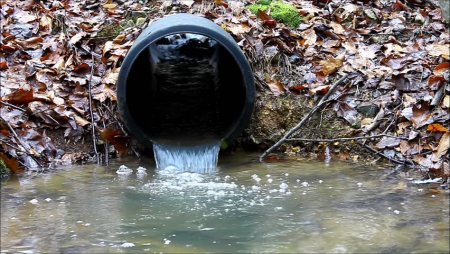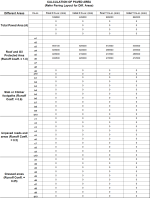Storm water Drainage

Description
Storm water drainage calculation
Stormwater calculations are essential for designing and managing stormwater systems, which are responsible for collecting, conveying, treating, and discharging rainfall runoff. Here's a summary of common stormwater calculations:
-
Rainfall data: Obtain local rainfall data, typically as Intensity-Duration-Frequency (IDF) curves, to determine the design storm for the project. The IDF curves provide information on rainfall intensities for various storm durations and return periods.
-
Catchment area: Determine the catchment area that contributes to the stormwater system by analyzing topographic maps, aerial images, or site surveys. The catchment area is used to calculate the volume of runoff generated during a storm event.
-
Runoff coefficients: Assign runoff coefficients (C) to different land use types within the catchment area, which represent the fraction of rainfall that turns into runoff. The coefficients depend on factors such as soil type, vegetation, and land use.
-
Time of concentration: Calculate the time of concentration (Tc), which is the time it takes for runoff to travel from the most remote point in the catchment to the stormwater system. The time of concentration affects the peak flow rate and is used in calculating the design rainfall intensity.
-
Rainfall intensity: Using the IDF curves and the time of concentration, determine the design rainfall intensity (I) for the project.
-
Rational method: The Rational method is a widely-used approach for calculating peak runoff flow rates (Q). The formula for the Rational method is:
Q = CiA
where Q is the peak runoff flow rate (cubic meters per second or cubic feet per second), C is the runoff coefficient, i is the rainfall intensity (meters per second or feet per second), and A is the catchment area (square meters or square feet).
-
Hydrograph analysis: In more complex cases, hydrograph analysis can be used to estimate the runoff volume and peak flow rates over time. This approach often involves using computer models and takes into account factors such as catchment characteristics, infiltration, storage, and flow routing.
-
Design of stormwater management systems: Based on the calculated runoff volumes and peak flow rates, design the stormwater management systems, including storm drains, detention or retention basins, infiltration systems, and other best management practices (BMPs) to control and treat stormwater.
In summary, stormwater calculations involve obtaining rainfall data, determining the catchment area, assigning runoff coefficients, calculating the time of concentration, determining rainfall intensity, and estimating runoff volumes and peak flow rates using methods such as the Rational method or hydrograph analysis. These calculations are essential for designing and managing stormwater systems that protect against flooding and mitigate the adverse impacts of stormwater on the environment.
Calculation Preview
Full download access to any calculation is available to users with a paid or awarded subscription (XLC Pro).
Subscriptions are free to contributors to the site, alternatively they can be purchased.
Click here for information on subscriptions.



